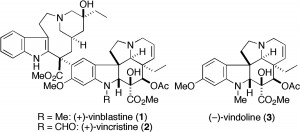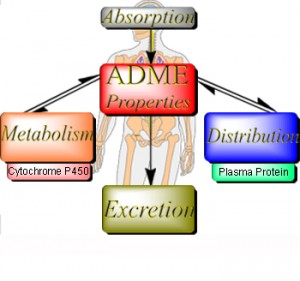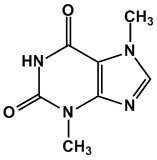A summary of the medicinal chemistry of adrenergics and cholinergic drugs including biosynthesis of norepinephrine and biosynthesis of acetylcholine, metabolism of norepinephrine and metabolism of acetylcholine and the structure activity relationship of the adrenergic and cholinergic agents.
NOTE – this does not have content on antagonists for the system.
Adrenergic Agents
Biosynthesis of Norepinephrine and Epinephrine

Metabolism of Norepinephrine

Structure Activity Relationships of Adrenergic Agents
 |
||
| In general, a primary or secondary aliphatic amine separated by 2 carbons from a substituted benzene ring is minimally required for high agonist activity | ||
| Benzene Ring and R3 substution | 1-OH and 2-R2 substitutions | NH-R1 – Amine |
| 1. 3′,4′- dihydroxy substitued benzene ring provides excellent receptor activity for both α and β sites. 2. However, there is poor oral bioavailablity due to COMT. 3. 3′,5′-dihydroxy compounds are not good substrates for COMT. Also 3′,5′-dihydroxy compounds are more selective for β2- receptors. 4. albuterol has 3′-hydroxymethyl (i.e. 3-CH2OH) and 4′-OH = β2 selective. 5. 3′-amino or even 3′-formylamino are also resistant to COMT. 6. Basically atleast one group must be capable of forming hydrogen bonds. And if only one group present it should be at 4′-position (then β activity is retained) e.g. Ritodrine – has only one 4′-OH, yet it has good β-activity. Also since Ritodrine has a large N-substituent = β2 selectivity is higher, therefore used in premature labor to relax the uterus. 7. If only a 3′-OH or a 3′-Sulfonamide present = lowered α activity but eliminates β activity. Therefore selective α-agonists can be made e.g. phenylephrine and metaraminol. 8. α-receptors accept a wide range of tolerance for agonist activity e.g. 2′,5′-dimethoxy substitution of methoxamine which is an α-receptor agonist but also a β-blocker at higher concentrations. 9. Phenylephrine, metaraminol and methoxamine are all agents which cause vasoconstriction. 10. When R3 = H – has both direct and indirect. (indirect activity is of two kinds – either by displacement of the neurotransmitter from the cell, or by inhibition reuptake of the neurotransmitter) |
1-OH Substituent: 1. By default must be present at β position to primary amine (i.e. spaced 2 carbons away). 2. being a chiral center the 1 position must be in R configuration for maximum activity (but many drugs sold as racemic i.e. R/S mixture)- exception dobutamine. 2-R2 Substituent: |
The pKa of the amine is approximately 8.5-10. This makes it basic and positively charged at physiological pH Properties of R1 Substituent on amino nitrogen:
1. as the size increases – selectivity for β receptor increases over α receptors. |
| 11. Since Norepinephrine stimulates both α and β adrenoceptors, indirect activity cannot be selective. | 7. Stereochemistry also plays an important role in determining direct or indirect activity. e.g. Ephedrine (-) i.e. 1R,2S = mixed α and β direct activity. Ephedrine (+) i.e. 1S,2R = primarily indirect activity. Pseudoephedrine i.e. 1S,2S = primarily indirect activity with negligible direct activity. |
|
Cholinergic Agents
Biosynthesis of Acetylcholine (ACh)

Metabolism of Acetylcholine
Free acetylcholine is hydrolyzed by acetylcholinesterase enzyme (AChE) to get converted back into choline.
Structure Activity Relationships of Cholinergic Agents
 |
||
| Ing’s Rule of 5: There should be no more than 5 atoms between the Nitrogen and the terminal Hydrogen for Muscarinic (or Cholinergic) Activity. | ||
| Acyloxy Group Modifications | Ethylene Bridge Modifications | Quarternary Ammonium Group Modifications. |
| 1. Keeping with the Rule of 5 if Acetyl group is replaced by higher homologues = decreased potency. 2. Esters of aromatic/high molecular weight acids act as antagonists. 3. To improve pharmacological action, change the acyloxy to a carbamic acid ester of choline (carbachol – potent M and N agonist). In such cases the carbonyl group is less electrophilic, therefore more stable towards hydrolysis as compared to esters. Carbachol is hydrolysed minimally by gastric acids, Acetyl choline esterase (AChE) enzyme or even butyryl choline esterase enzyme as compared to acetyl choline, therefore it can be administered orally. 4. Same logic is applied to methacholine and bethanechol – which are orally effective potent muscarinic agonists with almost no nicotinic activity at therapeutic doses. Muscarinic receptors show stereoselectivity i.e. S > R. 5. Looking at muscarine lead to the formation of ethers of choline. Muscarine has 3 chiral centers, therefore a total of 8 optical isomers is found, of which 2S, 3R, 5S is active. The C5 of muscarine = in absolute configureation is analogous to the chiral β carbon in S-methacholine. 6. Other choline ethers like S-choline ethyl ether is significantly potent but is not used clinically. 7. Also alkyl amino ketones are good. The most potent ketone derivatives posses a carbonyl group on δ carbon to quarternary amine in ACh. This suggests that the carbonyl binds by either H-bonding or other dipole-dipole interaction with an appropriate group on the receptor. 8. Furthermore, the activity of ethers and ketones demonstrates that neither the ester functional group, nor a carbonyl group is required for muscarinic agonist activity. |
1. If chain length is increased, the activity decreases. 2. Receptors cannot accomodate molecules larger than ACh. 3. Larger molecules may bind but don’t show any activity i.e. they are antagonists. 4. If the hydrogens are substitued by anything > methyl, compounds are less active than ACh. 5. Introduction of β-methyl results in compounds with greater M to N selectivity e.g. methacholine (acetyl-β-methylcholine) which has same M activity as ACh. 6. Introduction of α-methyl (i.e. acetyl-α-methylcholine) results in reduced activity. But this has higher N > M potency. 7. AChE hydrolysis – a) S = much slower than ACh. b) R = not hydrolyzed by AChE and inhibits the enzyme weakly. This is the reason why methacholine administered as a racemic mixture gives a longer duration of action. Nicotinic receptors show little stereoselectivity. |
1. If N replaced by P, S, As = somewhat active, but lowered activity and not used clinically. 2. +ve charge is required for muscarinic activity 3. If substituents all 3 methyls are replaced by larger alkyl groups = inactive compounds and antagonists. 4. If all three methyl groups replaced by three methyl groups results in cholinergic antagonist. 5. If only on methyl group replaced to ethyl or propyl, compounds much less active to ACh. 6. If amine changed from quarternary to tertiary, secondary or primary (i.e. substituting CH3 with H) it loses activity in the order quarternary>>tertiary>secondary> primary |
| Summary: 1. molecule must possess a Nitrogen atom capable of bearing a positive charge, preferably a quarternary ammonium salt. 2. for maximum potency, the size of the alkyl groups substituted on the Nitrogen should not exceed the size of a methyl group. 3. The molecule should have an oxygen atom, preferably an ester-like oxygen capable of participating in a hydrogen bond. 4. There should be a two-carbon unit between the oxygen atom and the nitrogen atom. |
||
References:
1. Foye’s Principles of Medicinal Chemistry (Buy at Amazon)
2. Wilson & Grisevold’s Textbook of Organic Medicinal Chemistry. (Buy at Amazon.com)
3. Class notes.




What is this medication used for ?
Beauty of science good notes thanks…..
Really, great work! A lot of information in a cool summary.